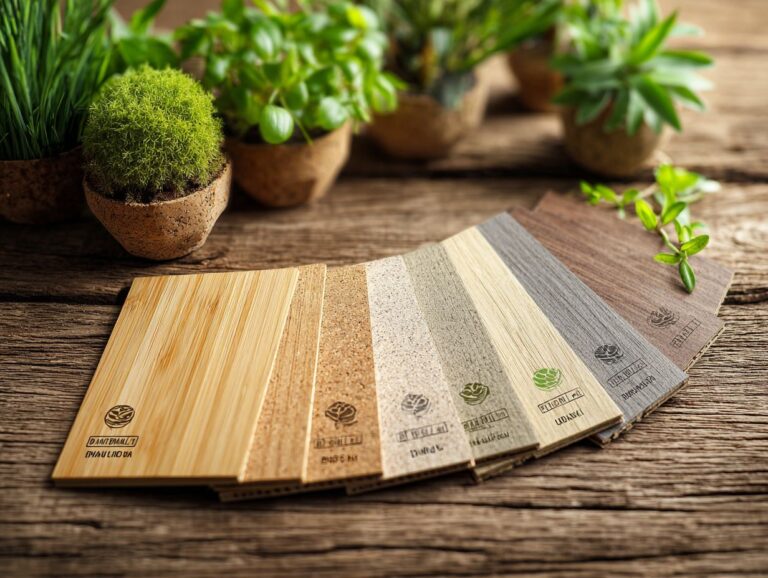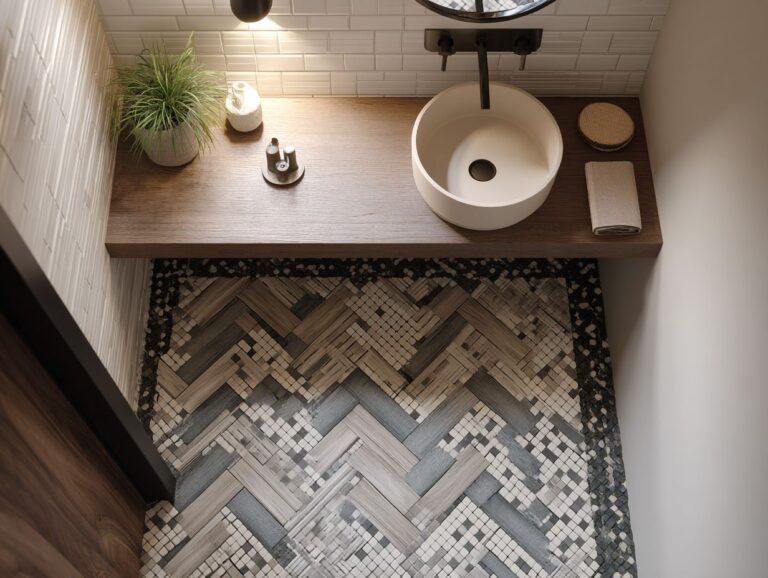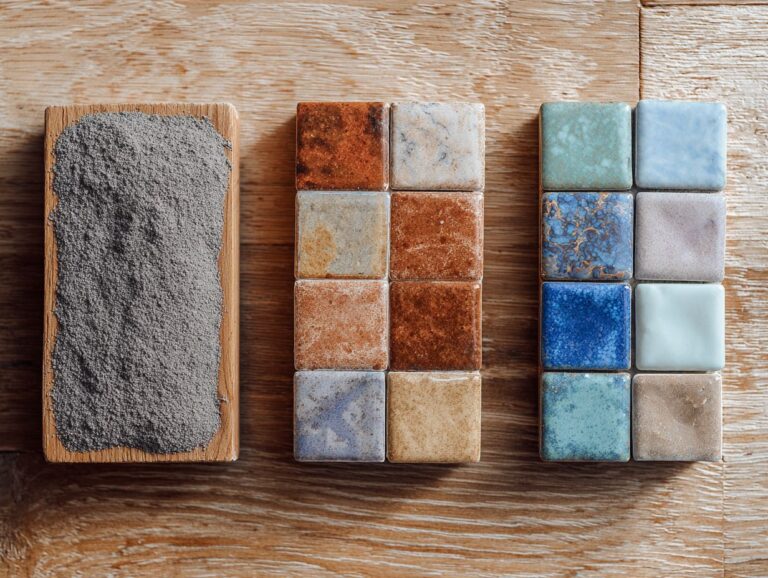Insurance Claims for Flooring – Coverage Guide
Contents
- Introduction to Insurance Claims for Flooring
- Types of Flooring Damage Covered by Insurance
- Water Damage and Flooring Insurance Claims Data
- Water Damage Overview: Insurance Claims and Payouts
- Water Damage Overview: Annual Impact
- Water Damage Overview: Common Causes of Claims
- Water Damage Overview: Flood Damage
- Restoration Costs by Water Damage Class: Class 1 Damage
- Restoration Costs by Water Damage Class: Class 2 Damage
- Restoration Costs by Water Damage Class: Class 3 Damage
- Restoration Costs by Water Damage Class: Class 4 Damage
- Fire Damage
- Impact Damage
- Pest Infestation
- Common Exclusions in Flooring Insurance Policies
- Steps to File a Flooring Insurance Claim
- Tips for Maximizing Your Flooring Insurance Claim
- Working with Adjusters and Contractors
- Frequently Asked Questions
- What is covered under an insurance claim for flooring?
- Will my insurance cover the full cost of flooring replacement?
- What types of flooring are typically covered under an insurance claim?
- What steps should I take when filing an insurance claim for flooring?
- Are there any exclusions for flooring coverage in my insurance policy?
- Can I choose the type and quality of flooring for replacement under my insurance coverage?
Introduction to Insurance Claims for Flooring

Key Takeaways:
Learning About Flooring Insurance Coverage
Flooring insurance coverage can vary significantly based on the policy and provider, typically encompassing damages from water, fire, and physical impact.
Homeowners need to check their insurance policy carefully to make sure they have enough coverage for different types of flooring like hardwood, tile, and carpet.
Common coverage options include protection against water damage from burst pipes and fire damage from electrical failures.
To make sure you have the best protection, think about using services like Wallace Insurance Law, which provides policy reviews to find any missing areas in your coverage.
It’s important to look at both the cost and the specific details of coverage related to flooring.
The Importance of Insurance for Flooring
It’s important to have the right insurance for flooring, so you can get repairs done quickly and payments made if there’s major damage.
For instance, water damage from a burst pipe can lead to flooring repair costs exceeding $3,000. Homeowners insurance typically covers such unexpected events, allowing you to file a claim without depleting savings.
If you live in an area prone to natural disasters, policies can safeguard against losses that business liability wouldn’t cover, like flood or earthquake damage.
Picking the right policy often means looking at your particular risks, checking different coverage choices, and talking to an insurance agent to get the best protection for your needs.
Types of Flooring Damage Covered by Insurance
Knowing what flooring damage is covered by insurance helps homeowners decide on filing claims. For a comprehensive understanding of maintaining and caring for different types of flooring, see also: Commercial Floor Care for Residential Use
Water Damage
Water damage from burst pipes or storm-related flooding is one of the most common claims made under homeowners insurance policies.
To assess water damage, start by documenting the incident thoroughly. Take photos of the affected areas and keep all receipts related to repairs and mitigation efforts.
Regarding insurance coverage, typical policies may exclude damages caused by flooding, so check your specific terms. Many homeowners opt for additional flood insurance to cover this risk.
A successful claim often requires evidence, such as expert evaluations. For instance, homeowners in Florida have received claims for burst pipes by documenting the cause and retention of a licensed plumber’s report-demonstrating clear links between damage and coverage.
Water Damage and Flooring Insurance Claims Data
Water Damage and Flooring Insurance Claims Data
Water Damage Overview: Insurance Claims and Payouts
Water Damage Overview: Annual Impact
Water Damage Overview: Common Causes of Claims
Water Damage Overview: Flood Damage
Restoration Costs by Water Damage Class: Class 1 Damage

Restoration Costs by Water Damage Class: Class 2 Damage
Restoration Costs by Water Damage Class: Class 3 Damage
Restoration Costs by Water Damage Class: Class 4 Damage
The Water Damage and Flooring Insurance Claims Data provides a detailed examination of the frequency, costs, and reasons for water damage claims, as well as restoration costs across various types of damage. This data is important for homeowners, insurers, and restoration businesses as it shows the financial effects of incidents involving water.
Water Damage Overview presents key metrics such as the 14,000 daily claims in the U.S., reflecting the commonality of water damage incidents. With an average insurance payout of $11,605, it’s evident that water damage incurs significant financial burdens. Additionally, 1.6% of U.S. homes file annual claims, indicating that a considerable portion of the population experiences water damage yearly.
- Common Causes of Claims: Data shows that wind and hail constitute 34.3% of claims, closely followed by water damage and freezing at 29.4%. Fire and lightning account for 25.1%, whereas all other property damage makes up 7%. This breakdown highlights water-related issues as a major cause of insurance claims, second only to wind and hail.
- Flood Damage: NFIP claims average a payment of $52,000, substantially higher than FEMA’s $4,200 relief payment. Annually, global flood damage reaches $40 billion, with $8 billion attributed to the U.S. These figures show the severe financial damage caused by floods compared to other types of water damage.
Restoration Costs by Water Damage Class Outline the different prices for repair work, focusing on how serious the damage is. Class 1 damage $150 to $400, dealing with minimal impact, whereas Class 4 damage$20,000 and $100,000. These numbers help explain the possible costs involved with varying levels of water damage.
This data shows the full impact of water damage, helping stakeholders handle risks, plan insurance, and improve restoration methods.
Fire Damage
Dealing with fire damage claims is challenging, but knowing your insurance coverage can help you recover faster.
Homeowners insurance typically covers various types of fire damage, including structural damage to your home, personal property loss, and additional living expenses while repairs are made.
To document fire-related losses, maintain a checklist that includes:
- Photos of damaged areas and belongings
- Receipts for replaced items
- Inventory of all property lost
- Contact information for firefighters and claims adjusters.
According to the latest statistics, about 70% of fire damage claims are approved, reinforcing the importance of thorough documentation for a smoother claims process.
Impact Damage
Impact damage, whether from heavy objects or natural disasters, is often covered by insurance, but the extent can vary widely based on the policy.
To document impact damage effectively, homeowners should follow a structured approach:
- First, take clear photographs of the damage, including close-ups and wider shots for context.
- Next, make a detailed list of affected items along with estimated repair or replacement costs.
- Gather any relevant receipts or previous appraisals to substantiate claims.
Coverage typically includes damages from fallen trees or hail, while issues like wear and tear or flooding may not be covered. Always review specific policy terms to understand exclusions or limits.
Pest Infestation
Pest infestations can compromise flooring integrity, but their coverage under insurance policies can be a gray area.
Many insurance policies exclude pest-related damages unless specific conditions are met. To back up claims, homeowners should take photos of the infestation, keep receipts from pest control, and collect service reports that explain the treatment steps.
Regular inspections and preventive measures-such as sealing gaps and maintaining a clean environment-can help reduce the risk of infestations.
Reading your policy carefully can show coverage limits. Some homeowners may want to add a pest-specific rider for better protection.
Common Exclusions in Flooring Insurance Policies
Insurance policies often have exceptions that can expose homeowners to surprise expenses, especially related to flooring.
Wear and Tear
Most homeowners insurance policies explicitly exclude coverage for normal wear and tear, which can affect flooring longevity.
To mitigate the risks associated with flooring claims, homeowners should proactively document the condition of their floors and implement regular maintenance practices.
Take clear photos of the floor from various angles at least annually. Keep receipts for cleaning and repair services, like refinishing hardwood or fixing tiles.
Consider using a moisture meter to monitor moisture levels in areas prone to spills or humidity; this can help catch potential issues early.
Establishing a clear record of care can safeguard against disputes with insurance companies regarding that inevitable wear and tear.
Negligence Issues
Claims arising from negligence, such as failure to maintain a roof leading to water damage, can complicate flooring insurance coverage.
Negligence in insurance means a policyholder doesn’t act responsibly, causing damage or loss. For instance, if a homeowner neglects to repair a known leak, any subsequent water damage claims might be denied.
Similarly, failing to clear debris from gutters can lead to roof collapse, jeopardizing coverage. To avoid these problems, regularly perform maintenance checks, record repairs, and save receipts.
This proactive approach strengthens your claim and demonstrates due diligence, minimizing the chances of denial.
Natural Disasters

While some homeowners insurance policies cover natural disasters, many require additional flood insurance for full protection against flooring damage.
For instance, according to the National Flood Insurance Program, floods are responsible for about 90% of all U.S. disaster claims. Homeowners should assess their needs, particularly in high-risk areas.
Consider opting for a policy that includes provisions for replacement costs rather than actual cash value, which accounts for depreciation. Tools like floodzonechecker.com can help determine if your property lies in a flood zone.
Reaching out to insurance agents can clarify which specific natural disaster coverages you might need to add on.
Steps to File a Flooring Insurance Claim
Filing a flooring insurance claim needs a clear method to gather and send all required information correctly.
Documenting the Damage
Keeping detailed records of damage is essential for flooring insurance claims and often affects the compensation decision.
To document damage well, first take clear photos from different angles. Make sure to include any details or hidden issues. Keep detailed notes describing the damage and the circumstances around it.
It’s also important to retain any receipts for repair estimates and related expenses. To organize your stuff, use apps like Evernote or Google Drive to store images and documents. This makes them easy to find during the claims process.
This method significantly strengthens your argument for compensation.
Contacting Your Insurance Provider
Contacting your insurance company quickly and with a professional attitude can greatly affect how your claim is handled and resolved.
To communicate effectively with your insurance agent, prepare a list of essential information before the call. This should include your policy number, a brief description of your claim, and any relevant dates or events.
Ask specific questions to clarify the claims process, such as:
- “What documents do I need to submit?”
- “How long will the review take?”
Remember to note any reference numbers provided during the conversation, as they serve as a key point for follow-up inquiries, ensuring you have a record of your discussion.
Filling Out the Claim Form
Completing the claim form correctly is important to avoid delays or denials when processing flooring insurance claims.
To make the claim process easier, begin by collecting all required paperwork. This includes your policy number, photographs of the damage, and any repair estimates.
Using a checklist helps you remember important details:
- Verify that each section of the form is complete.
- Confirm you’ve signed it.
- Attach all supporting documents.
You might want to use digital tools like Dropbox or Google Drive to store and organize your files. This will make them easy to find during submission.
Follow-Up Procedures
Checking on your flooring insurance claim is important to make sure your request is handled quickly.
To keep the claims process on track, establish a timeline for follow-ups. Reach out to your insurance adjuster weekly after you send your first claim.
Write short emails or make calls, including your claim number and a summary of your situation. If you don’t receive updates, escalate the matter by asking for a supervisor after two weeks.
Clear communication and persistence can significantly impact the speed of your claim resolution.
Tips for Maximizing Your Flooring Insurance Claim
Getting the most out of your flooring insurance claim usually depends on being well-prepared and knowing the details of your policy.
Keeping Detailed Records
Keeping detailed records of all communications and repairs can greatly increase the chances of successful flooring insurance claims.
- Start by creating a dedicated filing system, either digital or physical.
- To organize documents on your computer, use Google Drive or OneDrive. Create folders with names like ‘Communication’ and ‘Repairs.’ Store emails, receipts, and photos of any damage in these folders.
- In a physical system, consider a binder with dividers for easy access. Regularly update your documentation, noting dates and details in a dedicated log. This structured approach makes finding information during claims easier and supports your case with solid proof.
Understanding Your Policy Limits
Knowing the limits of your insurance policy is important to make sure you have enough coverage when you need to file a flooring claim.
Start by reviewing your policy documents to identify your coverage limits for specific flooring types. Pay special attention to any exclusion clauses that could impact your claim, such as limits on water damage or specific perils.
For clarity, take notes on any jargon or terms you don’t understand. If you encounter ambiguities, consult with an insurance agent who can explain complex clauses and offer guidance on your personal situation.
This proactive approach can prevent surprises when filing a claim.
Working with Adjusters and Contractors
Working well with insurance adjusters and contractors can make the claims process faster and lead to quicker outcomes.
Choosing the Right Contractor

Selecting a reputable contractor can significantly influence the quality of flooring repairs and the efficiency of insurance claims.
To find the right professional, begin by requesting testimonials from previous clients.
Online reviews on platforms like Angie’s List can give information about how dependable they are and the quality of their work. Confirm that the contractor possesses the necessary licenses and insurance to protect yourself from liability.
Talking to potential contractors can help you judge their experience and professionalism. This thorough vetting process can save you time and money in the long run, ensuring that your flooring repairs are carried out smoothly.
Communicating with Adjusters
Effective communication with insurance adjusters can help clarify expectations and facilitate smoother negotiations during the claims process.
To make your communication better, start by listing exact questions about your claim, like due dates and required forms.
During your conversation, write down the adjuster’s answers to make sure you get all important details. After the call, send a follow-up email summarizing the important points discussed and any upcoming steps. This helps you remember the conversation and provides a written record.
Google Docs can make writing summaries easy, simplifying the process for everyone.
Final Thoughts on Flooring Insurance Claims
Being well-prepared and informed can make a significant difference in the outcome of flooring insurance claims.
To increase the likelihood of a successful claim, start by taking photos or videos of your flooring before it gets damaged. Take clear photographs and maintain receipts for all related purchases, including materials and installation.
Familiarize yourself with your specific policy coverage to identify what damages are claimable. Consider using a claims app like PolicyPal to manage and track your documentation.
Talk quickly and plainly with your insurance adjuster and give them all needed proof to speed up the claims process a lot.
Frequently Asked Questions
What is covered under an insurance claim for flooring?
Coverage for flooring under an insurance claim typically includes damages caused by water, fire, and natural disasters. In some cases, it may also cover damages due to normal wear and tear.
Will my insurance cover the full cost of flooring replacement?
It depends on the type of coverage you have and the cause of the damage. Some insurance policies have a limit on coverage for flooring, while others may cover the full cost of replacement.
What types of flooring are typically covered under an insurance claim?
Most insurance policies cover a range of flooring types, including hardwood, carpet, tile, and laminate. It’s important to review your policy to see what types of flooring are covered.
What steps should I take when filing an insurance claim for flooring?
First, document the damage and contact your insurance company. They will likely send an adjuster to assess the damage and determine coverage. It’s important to keep all receipts and invoices for flooring repairs or replacement.
Are there any exclusions for flooring coverage in my insurance policy?
Some common exclusions for flooring coverage may include damage caused by neglect or improper maintenance, as well as damages from flooding or earthquakes. Review your policy or speak with your insurance agent for more specific information.
Can I choose the type and quality of flooring for replacement under my insurance coverage?
In most cases, insurance companies will cover the cost of replacing your damaged flooring with a similar type and quality. You might be able to choose better flooring, but you will probably need to cover the extra expense.





